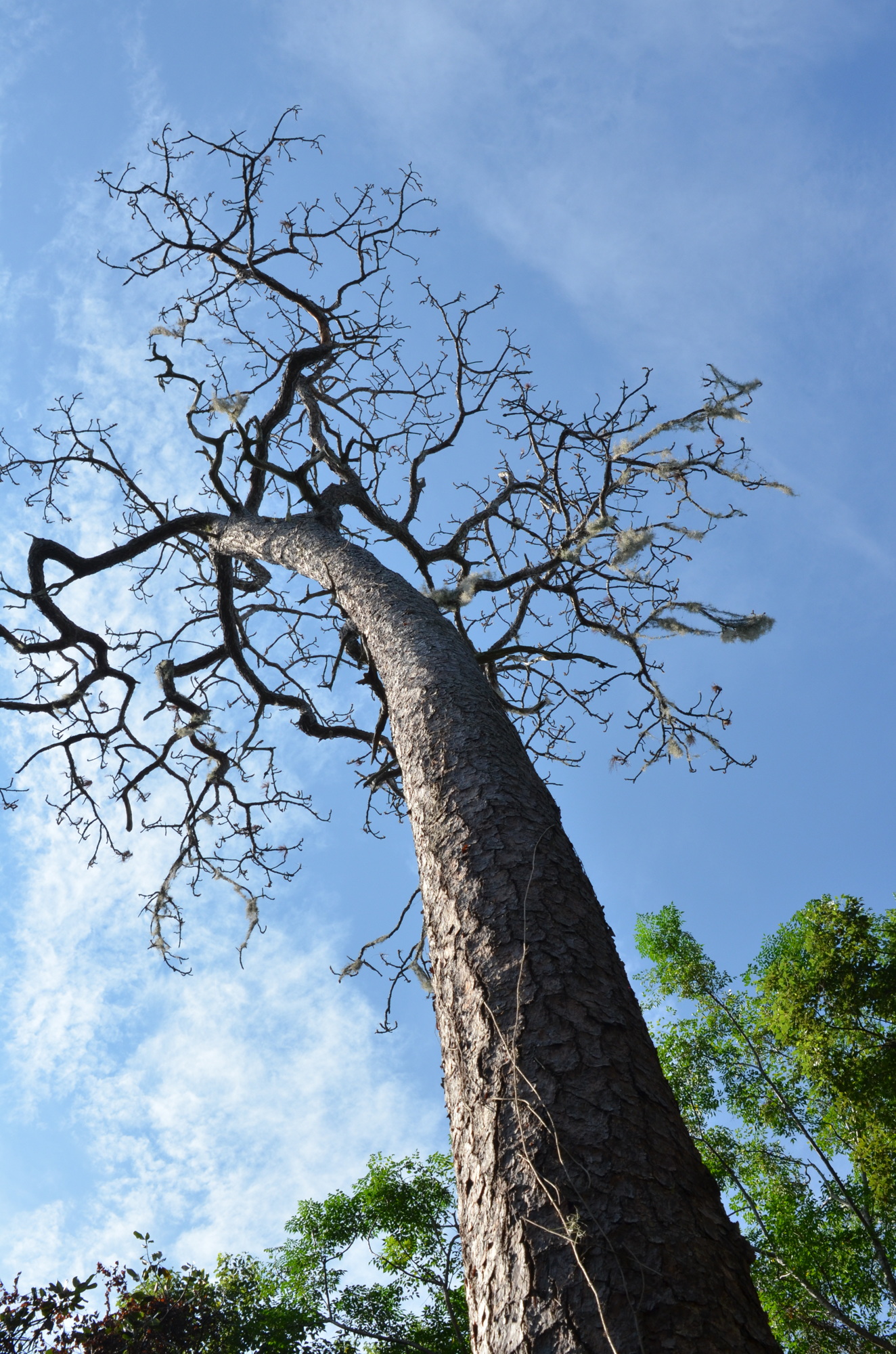- April 4, 2025
-
-
Loading

Loading
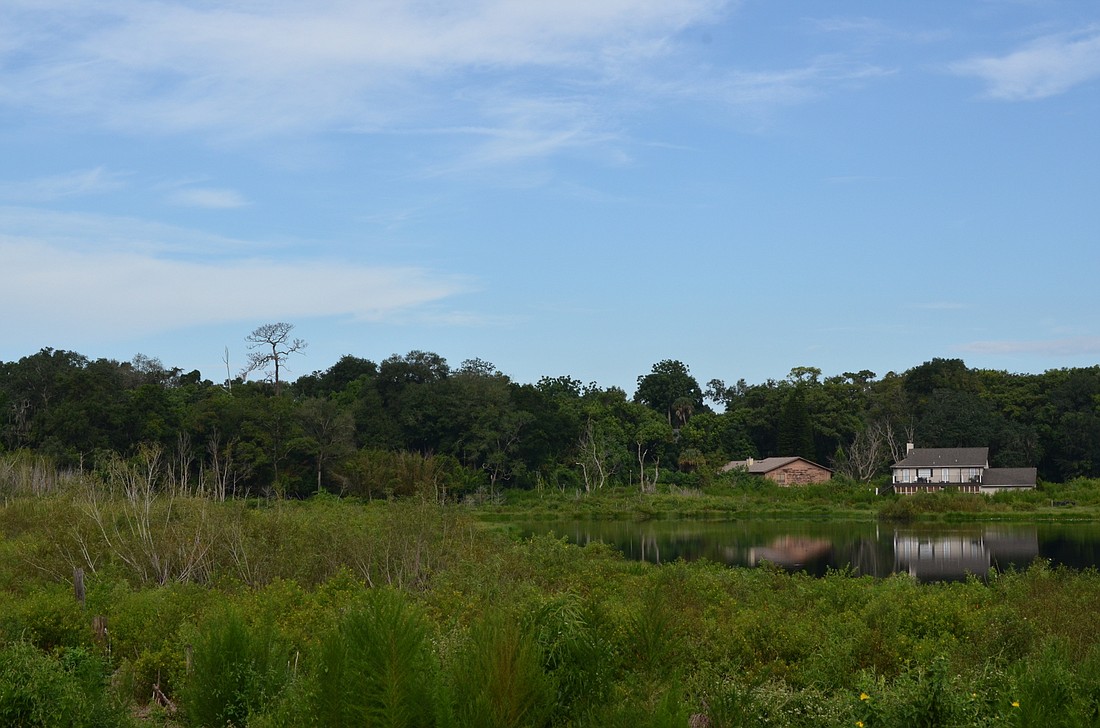
Gotha is one of the oldest settlements in West Orange County, and its rich history is evident with its 136-year-old botanical wonderland and numerous old cemeteries dating as far back as the 1800s.
But the Florida’s Turnpike Enterprise is threatening all this history, said Theresa Schretzmann-Myers, a longtime advocate of Gotha and Nehrling Gardens who is passionate about environmental preservation.
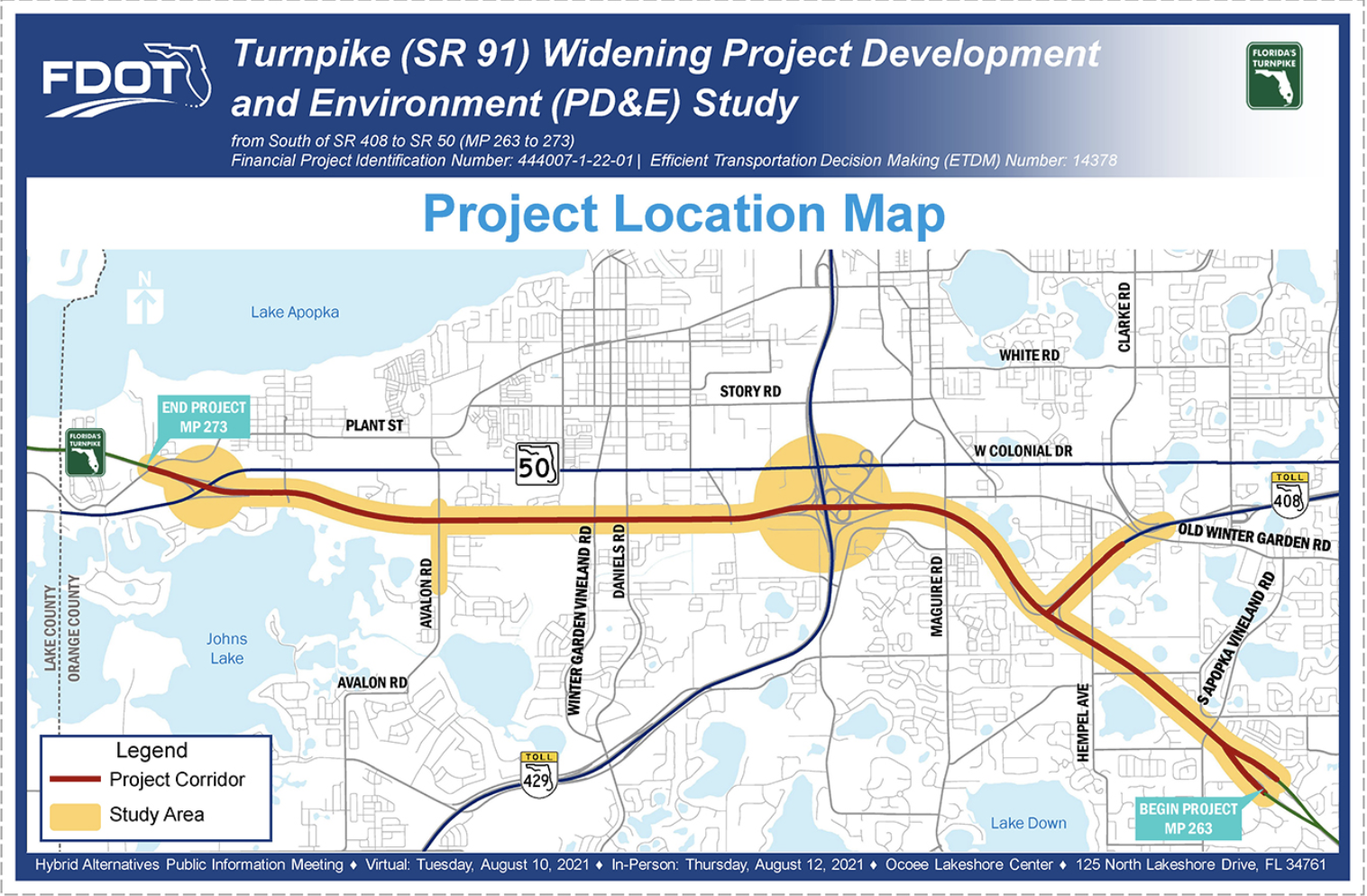
FTE is proposing to widen a 10-mile stretch of the turnpike — from south of State Road 408 at mile post 263 to State Road 50 at mile post 273 and along S.R. 408 from the turnpike interchange to east of the overpass at Old Winter Garden Road — from eight lanes to 12, which would encroach on several historic properties, she said. Furthermore, FTE is proposing to lengthen a bridge on Hempel Avenue, which would call for moving the sound barrier farther to the east and west, she said. This creates more runoff and more light and noise pollution.
“Stormwater impacts are our greatest issue,” Schretzmann-Myers said. “There are no trees planted on these bridges to suck up the water. Trees are great if they would plant them as a buffer, but where are you going to put them on bridges?”
Orange County has made some mistakes, Schretzmann-Myers said, causing major stormwater runoff issues. The turnpike expansion will create even more, she said.
She is concerned about the many lakes that dot Gotha, the abundance of wildlife that flourishes there and the unique history of the small, two-square-mile rural settlement.
In a Facebook post, the Gotha Rural Settlement Association posted about the proposed project:
“Turnpike bridges (through) Gotha are already eight lanes. Florida DOT wants to build four more lanes over Lake Pearl. Sound and noise already impact our post office on the south, historic Nehrling Gardens on Hempel and cemeteries on Morton Jones Road on the north. Not to mention dump thousands of gallons into our Gotha lakes causing more flooding. Also noise and lighting levels to locals and wildlife will be devastating.
“It is a massive project that will widen the bridge over Lake Pearl from eight lanes to 12, (S.R.) 408 bridge near Camp Ithiel, impact Gotha Post Office on south of turnpike bridge on Hempel, historic Zion Lutheran Cemetery on Hempel and Morton Jones Road that sits 150 feet from the bridge, Jewish Cemeteries that abut up to north side of Turnpike.”
RICH IN HISTORY
Gotha is a Historic Rural Settlement in Southwest Orange County with a long history. It is the resting place of famous painter Bob Ross and Dr. Henry Nehrling, scientist, ornithologist and botanist, whose historic Palm Cottage Gardens still exists in Gotha. German immigrant H.A. Hempel founded Gotha in 1885; the main thoroughfare is named for him.
Hempel acquired 1,000 acres and invited fellow Germans to live in his new colony, which he named after his hometown in Germany.
“Gotha in the 1890s was a very lively community,” Kathleen Klare, director of the Gotha Rural Association Inc., has written about the community's history. “Because of the background and the intellect of these German people, they were rebuilding the character of their old German culture, and they were building it in the woods of Florida.”
This section of Gotha became a common location for cemeteries after locals held their first burials in the Turnverein and Zion Lutheran Cemetery at the quiet northeast corner of Hempel and Morton Jones.
Schretzmann-Myers said this is just 150 feet from the turnpike.
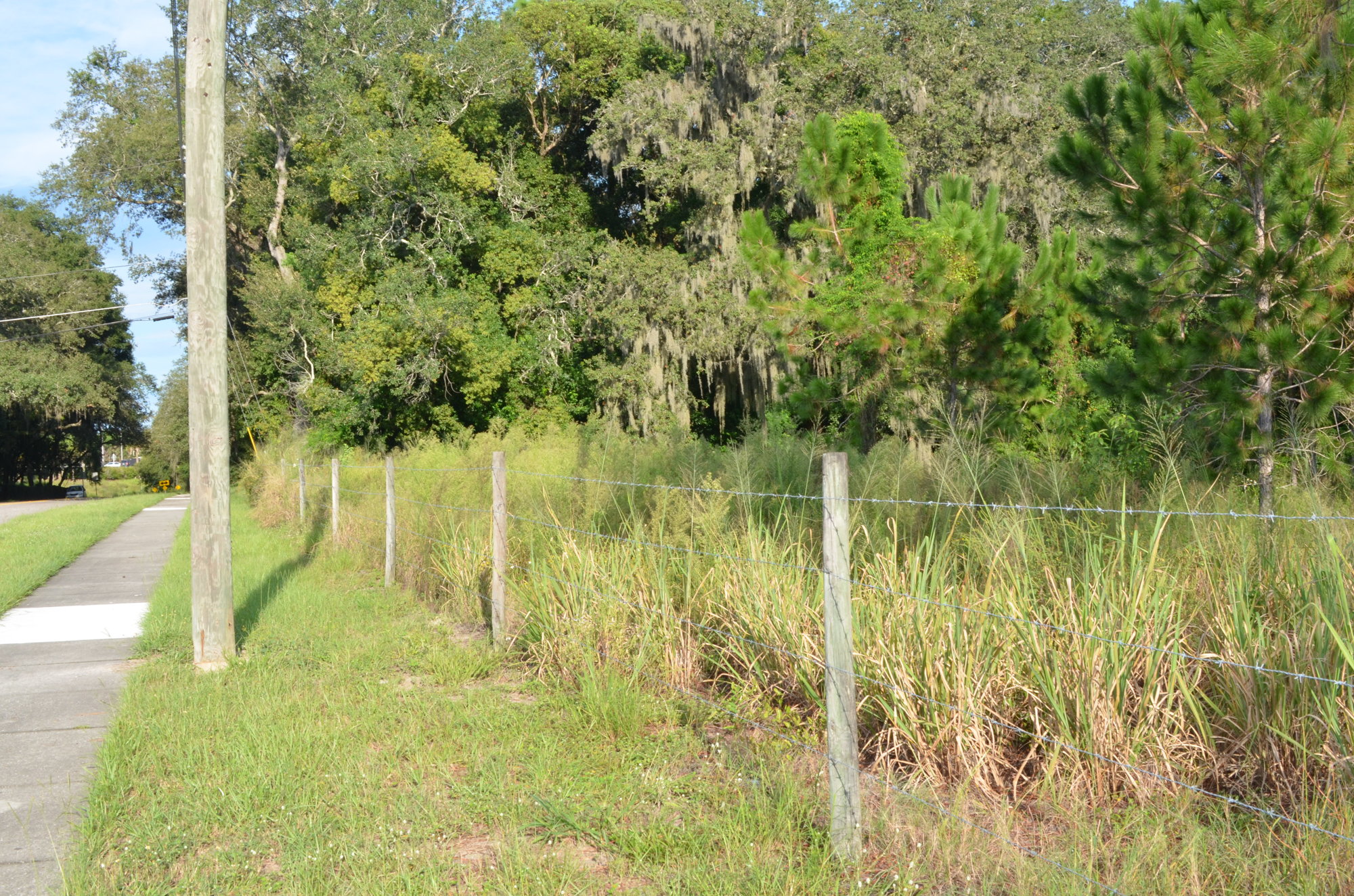
The Turnverein Germans created some of the earliest gravesites, which now are buried in an overgrown area just east of Hempel. On the other side of the cemetery are the Lutheran gravestones.
Henry Nehrling, who founded Nehrling Gardens, and his wife and two daughters were buried here; he was later moved to Woodlawn Memorial Park and Funeral Home.
To the east on Morton Jones are three Jewish cemeteries: Temple Israel Garden of Eternal Rest, Beth Israel Memorial Park and Congregation Bet Chaim. Woodlawn is nearby on Woodlawn Cemetery Road.
Schretzmann-Myers said folks from the Jewish cemeteries are forming a coalition to try to keep FTE from taking their land through eminent domain.
Along Morton Jones Road is the last 10-acre green space north of Nehrling Gardens. A weathered for-sale sign is posted on the property.
Several gopher tortoise burrows are nestled on this land — on one of the few remaining green spaces in Gotha — surrounded by Nehring Gardens to the north, development and graveyards to the east, Morton Jones Road to the south and more cemetery plots to the west.
“There needs to be no more development around Lake Nally,” Schretzmann-Myers said. “Make it a Florida Forever Land.”
New Life Worship Church and Crenshaw School have gopher tortoises along the berm behind their property near the turnpike, as well.
The gopher tortoise is a keystone species of longleaf pine forests. It digs deep burrows for shelter and shares the space with more than 350 other species; its presence means survival for animals such as snakes, frogs, skunks and rabbits.
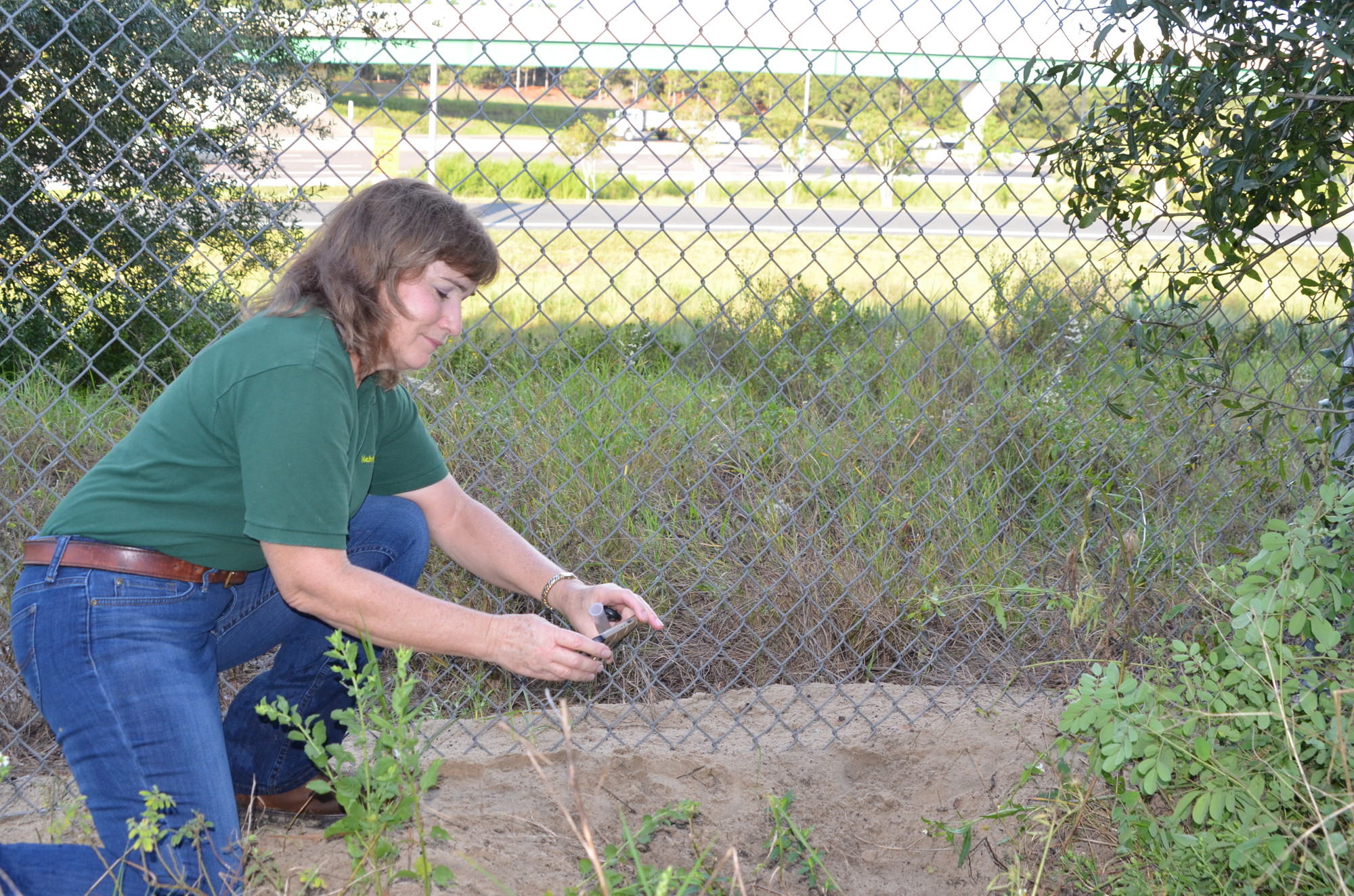
These animals live in high and dry places, which includes the area of Hempel Avenue in Gotha.
The turnpike runs along the highest ridge, and all water runs off the roadway and into Gotha’s basin of lakes.
A HUGE CONCERN
Richard Nehrling, the great-grandson of Henry Nehrling, has several historical documents from 1956, when Gotha citizens wrote letters to the Florida State Turnpike Authority expressing their concerns about the original turnpike. Its original path would have cut Nehrling Gardens in half, but the turnpike authority’s then-chairman made the decision to reroute the turnpike to the south and spare the gardens.
Richard Nehrling wrote a letter to FDOT earlier this month expressing his concerns about the current proposed project. He has not received a reply, he said.
“This is, of course, a huge concern for me and the decades of work by local citizens to bring back to life the historic home and gardens in Gotha,” Richard Nehrling said.
David Boers, who grew up in the Gotha area and has lived on Morton Jones Road since the early 2000s, said flooding wasn’t a problem when the turnpike was first built. The flooding from stormwater runoff started in the late 1990s when the turnpike-S.R. 408 interchange was built. He fears it will get worse if the widening project is approved.
“The turnpike did their own studies,” he said. “Then there was another study to show what they could do to fix it. Because it was a multiphase project, they kept pushing it to the next phase and the next phase and nothing ever got done.”
The lakes in Gotha are closed-basin lakes, meaning water does not flow out.
“They stay here because there’s nowhere for them to flow out,” Boers said. “You can build in a flood plain if there’s somewhere for it to go.”
But, in Gotha, the water has nowhere to go. When the turnpike was built, Mill Lake was split into two smaller lakes, Mill and Gotha. Boers’ property is on Gotha Lake and abuts the turnpike bridge. The runoff from the turnpike has affected his property and his neighbors.
He built a big levy to hold back all the water coming from the turnpike, and it worked.
“We’ve seen the impacts (at) Nehrling Gardens,” Schretzmann-Myers said of the rising water levels in Lake Nally. “We’ve lost all of our lakefront plantings – bald cypress, pond cypress, pickerall, duck potato, all the aquatic plants we planted to restore the lakefront have drowned because there was so much water. And these are aquatic plants. And we’ve had this invasive Cuban bullrush that has taken over the entire perimeter of Lake Nally.
“The lake is very unhealthy right now,” she said.
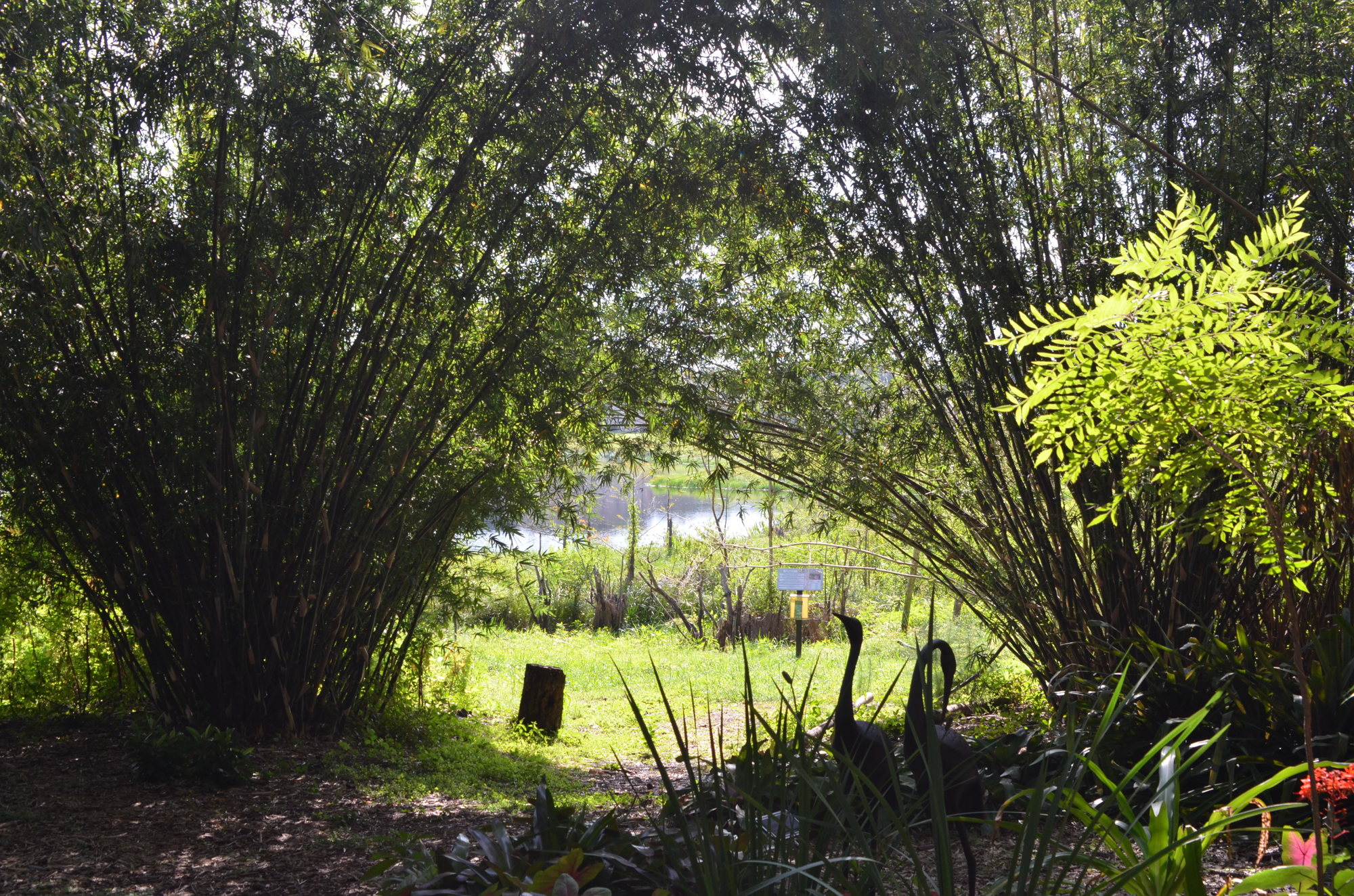
“Nehrling planted bamboo above the 100-year floodplain, but many died and had to be cut out when Lake Nally rose and covered them with water,” Schretzmann-Myers said.
Further offshore on the Nehrling property is a dying Florida longleaf pine, standing more than 100 feet tall and thought to be between 200 and 300 years old.
“The turnpike expansion right now is going to impact more areas around here that we haven’t seen impacted,” Boers said. “They are building on a flawed system, which is very dangerous. Like, if you’re going to build a condominium, and you get two floors up and you think, ‘You know, I don’t think this concrete is right. But we’ll just strengthen later on.’ Now, you’re at 10 floors and someone says, ‘Let’s build five more.’”
FDOT has a certain stormwater regulation,” Boers said. “The state of Florida law — you have to use a 100-year floodplain, and all your design is based on that elevation. … Somewhere along the line, FDOT was able to use the 25-year floodplain as their basis. So, they dump all their runoff off their right of way. Who’s responsible? Orange County.
“I feel bad for Orange County; they inherited it,” he said. “They tried real hard, but someone at Orange County approved something at Lake Nally that they shouldn’t have. … Zoning, in particular, was the enemy on this one.
“The problem is all these things have taken place, and the worst about it is this is rural development,” said David Boers. He has lost two-and-one-half acres in property because of a change in floodplain.
“This was classified by the original planners in Orange County as a rural district, and if you followed the law, the rural code, you can’t put more than one home per acre — and if they had followed that, there wouldn’t be flooding on Lake Nally. And because we’re rural, the turnpike said, ‘How many people will we actually impact over here?’
“I’m a believer that if the turnpike would just talk to Orange County, they could find a compromise,” he said. “Nicole Wilson is great.”
The Braemar community — on Hempel between Fischer Lake and Lake Nally — has 53 homes on its 50 acres, and this is part of the problem, Boers said, because a rural settlement can only have one house per acre. It also was built with underground drainage that empties into Lake Nally, Boers and Schretzmann-Myers said.
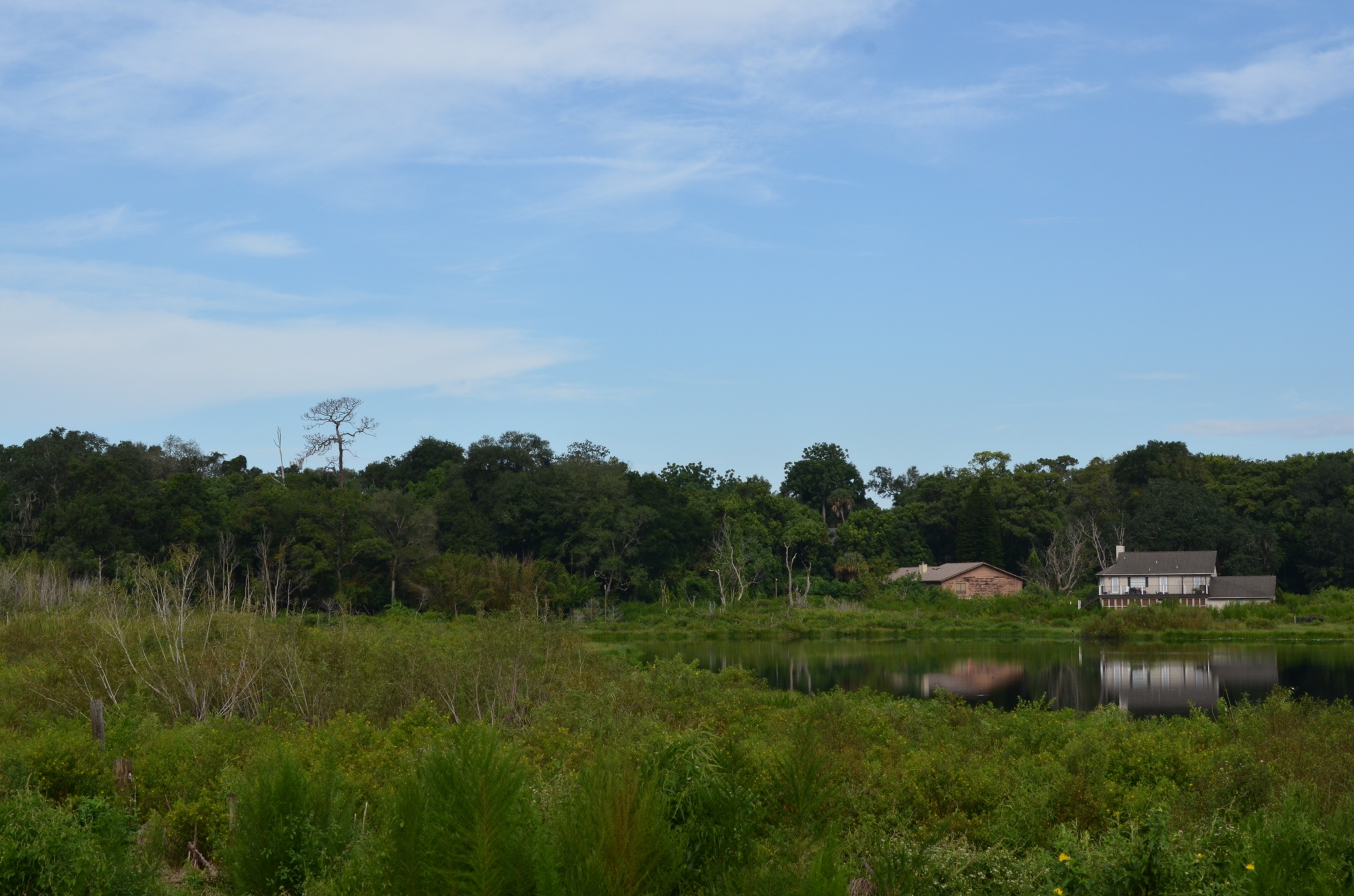
This lake has nowhere to drain, so when fill dirt was added near the lake to fit in more homes, Boers said, the water levels rose.
“We’re seeing the observation deck (at Nehrling Gardens) for the first time in two years,” Schretzmann-Myers said. “We think Lake Nally has gone down because they turned off the pipe during this lawsuit.”
Several families who live on Lake Nally and whose homes are either under water or are close to it filed a lawsuit in 2019. Two of them have had to abandon their homes because of severe interior water damage.
Also affected is the nearby Camp Ithiel, which has been operating along the shore of Fischer Lake since 1948. The land was reduced in size in the late 1980s when S.R. 408 was extended west.
Mike Neff, camp director, said the lakes of Gotha, Fischer and Nally, have all experienced flooding in the last two years.
“What we’ve experienced in Lake Fischer is flooding, which is unusual, and is probably related to a number of things,” Neff said. “Our flooding issues are related to, in part, to another retention pond that’s on the north side of the 408 between Hempel Avenue and Old Winter Garden Road. I say, ‘in part,’ because the other part of our flooding is due to rainfall and some due to development.”

At nearby Lake Pearl, a green buffer separates the lake from the turnpike.
“These trees probably will have to come out with the bridge expansion,” Schretzmann-Myers said.
Removing the trees increases the runoff into the lake, which, in turn, floods the habitat.
“There’s no buffers on the bridges, no buffers for sound, no buffers for lights,” she said. “They’re already getting impacted from the extreme noise, the LED light, the sound, and all that nonpermeable surface is going to pour more water into Lake Pearl
“Lake Pearl is healthy now – but I don’t know what will happen once the bridge is lengthened,” Schretzmann-Myers said.
“FDOT announced the public meetings only one to two weeks in advance,” she said. “A lot of people have no idea this is coming down the pipeline because there was no notice. All we can hope to do is educate the turnpike (officials).”
Schretzmann-Myers attended the public meeting in Ocoee and said she was surprised to see FTE didn’t have Nehrling Gardens or the historic cemeteries on the display map.
“I told them, ‘You’re missing Camp Ithiel, botanical gardens – these are the last green spaces in Gotha,’” she said.
“The Gotha wildlife cannot sustain any of this,” Schretzmann-Myers said. “We have a bobcat that sleeps there in the day and hunts at night. There’s aquatic turtles, sandhill cranes, fishing birds, herons, anhinga, they all live on the lake, and they’re being displaced by the flooding and the lack of food.”
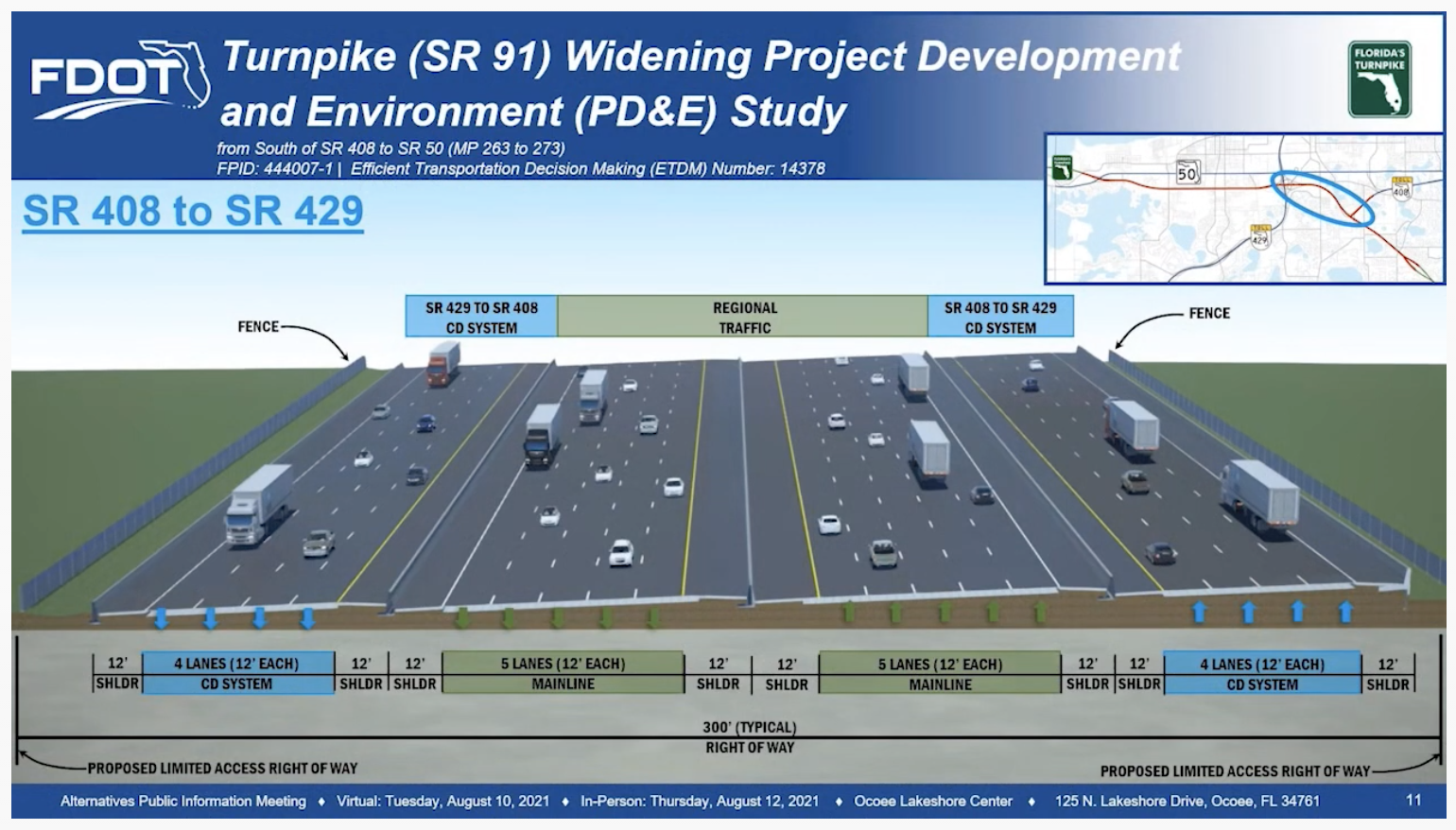
TURNPIKE STUDY
Florida’s Turnpike Enterprise, part of the Florida Department of Transportation, is conducting a Project Development & Environment (PD&E) Study for widening the turnpike in West Orange County.
The project is in the second step of a five-step process, according to Maria Parada, community outreach specialist with FDOT and FTE. Nothing has been approved, and no funding currently is available for the project or its design.
This second step, the PD&E Study, includes looking at existing conditions, future traffic needs and alternatives; making environmental and engineering evaluations; garnering public and agency involvement; and making study recommendations.
During the PD&E study, the public is encouraged to comment. When this phase has ended, officials determine if the project should move forward. A public hearing is planned for late spring or early summer 2022.
As part of the study, all interchanges in this area and the need for new interchanges will be evaluated. The turnpike currently has eight to 12 lanes (four through lanes and one to two auxiliary lanes in each direction), within the study limits. The PD&E Study will evaluate widening the turnpike with and without managed lanes, plus auxiliary lanes, according to the turnpike website.
The project will also include bridge construction, and improvements and modifications to the existing interchanges within the project limits.
A public information meeting video presented by the FTE in a virtual meeting Aug. 10 and again during an in-person meeting in Ocoee Aug. 12 said an evaluation is being done on the potential effects to the social, cultural, natural and physical environment.
This includes aesthetic effects and relocation potential; wetlands and other surface waters, water resources, floodplains and protected species and habitat; highway traffic noise, air quality and contamination; and historical and archaeological sites.
In the video, Nathan Silva, a PD&E consultant with engineering consultant RS&H Inc., and several officials, answered a number of questions posed by residents. The panel included specialists in noise, right of way, drainage and traffic, as well as a roadway engineer.
When asked about a construction timeline, they said although there is no funding or official schedule, “this project is a high priority for Florida’s Turnpike Enterprise and funding may come available in future funding cycles.”
One resident asked if the proposed improvements would impact the historic cemetery on Hempel Avenue.
“No, this project will not impact this cemetery,” officials said. “It’s far enough away that it will not be impacted.”
Another resident asked for an explanation of the Hempel improvements.
“This project crosses Hempel Avenue at two locations,” officials said. “The turnpike bridges over Hempel, and all we’ll be doing is widening the bridge over Hempel right there. Where Hempel crosses over the State Road 408, the widening of S.R. 408 will not fit under the existing Hempel Avenue bridge, so we will have to replace that Hempel bridge with a longer, wider bridge.”
Officials said they have had numerous meetings with Orange County and all municipalities affected by the proposed project.
One citizen asked for details on a proposed bridge at Lake Pearl, and the response was this: “If that’s one of the water bodies that’s directly adjacent to the turnpike — we will be looking at ways to minimize any impacts to any of the adjacent water bodies either through retaining walls or bridging. We’re looking at a variety of alternatives, but as we progress through the final …progression, we’ll have more answers in the future.”
Schretzmann-Myers said there is only one answer — don’t widen the turnpike or lengthen the bridges in Gotha.
“It’s a massive project, and the impacts are going to be felt through the Gotha Rural Settlement and every other settlement that this goes through,” she said.
For information and updates, visit Turnpike408to50.com.
